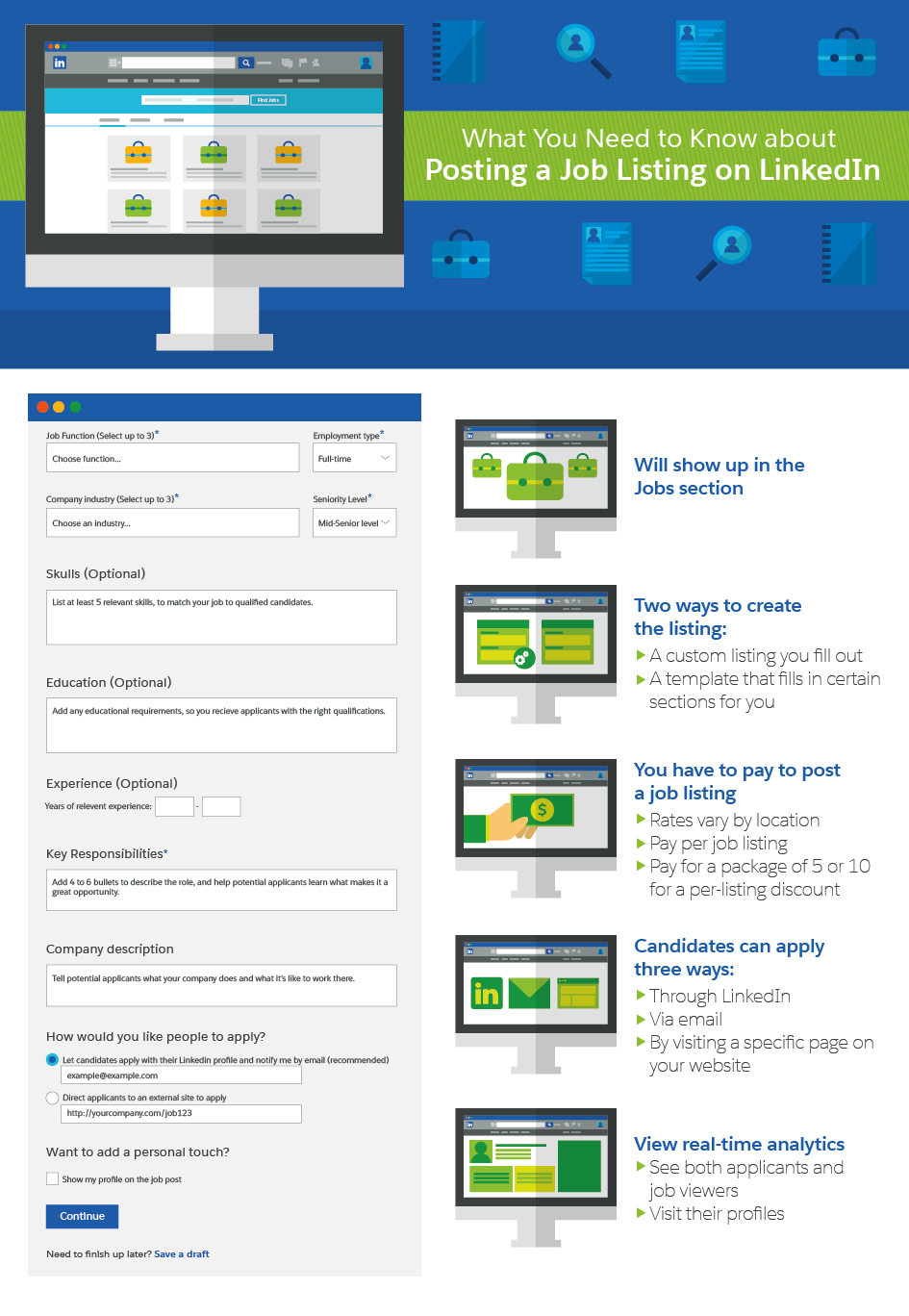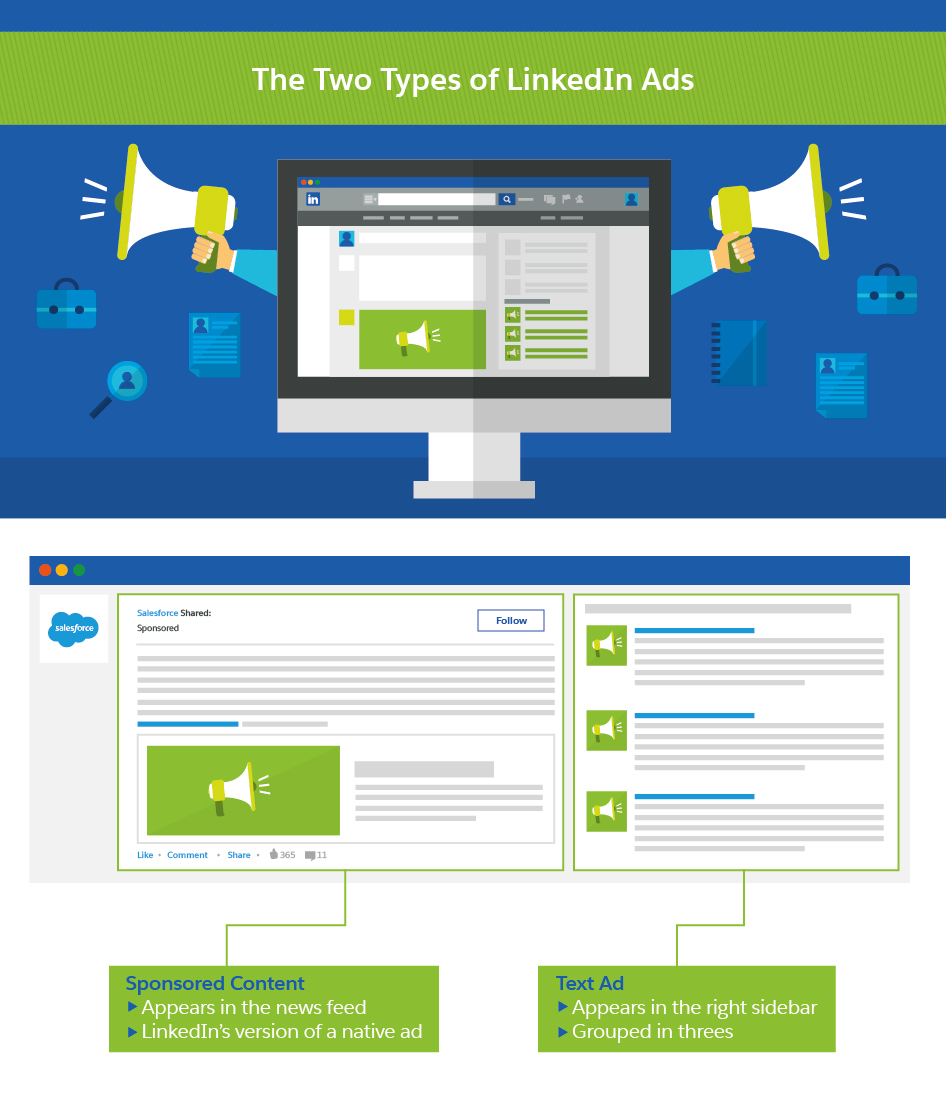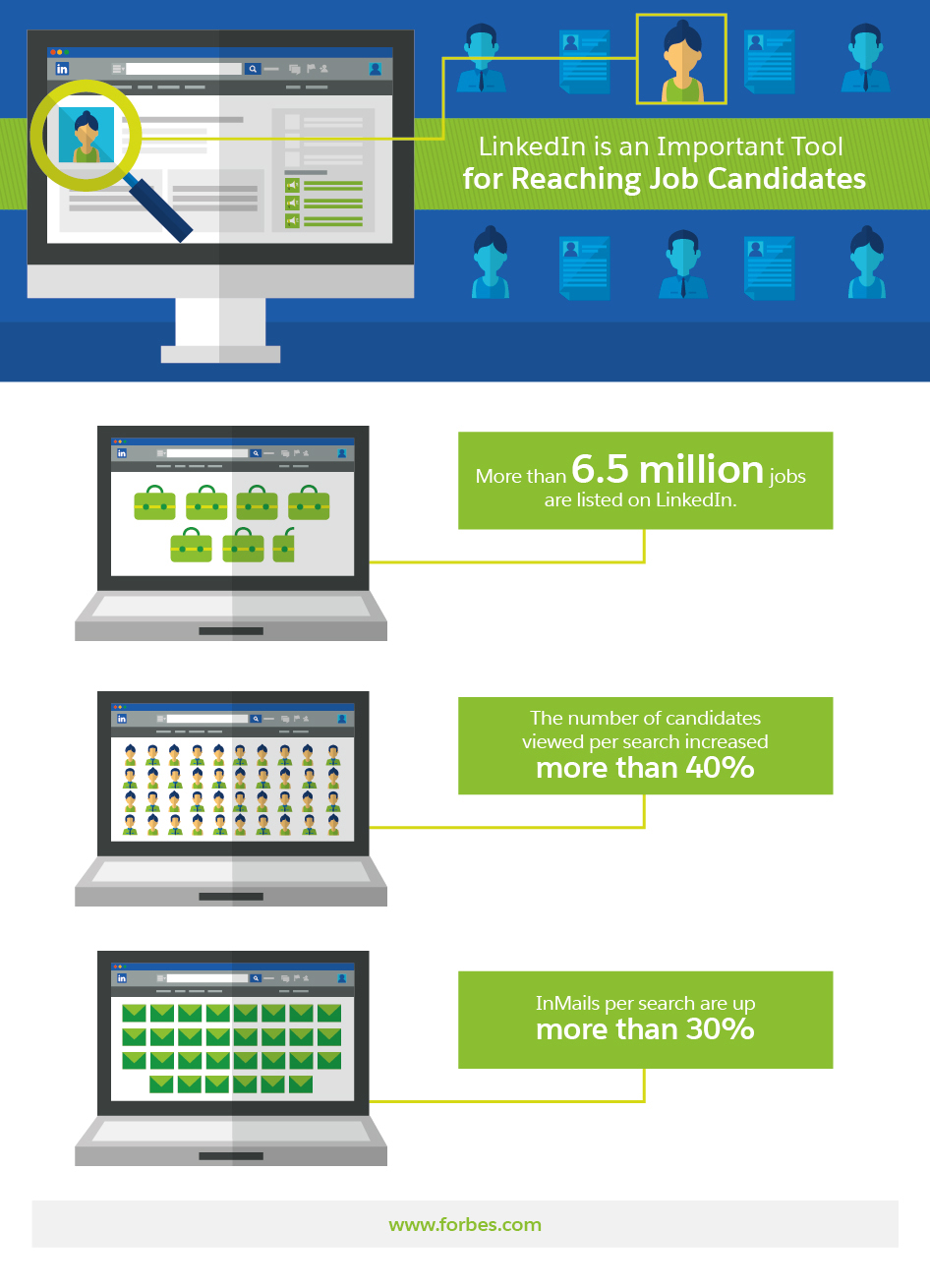When you’re ready to start hiring, LinkedIn is a great resource. It brings together lots of positives: You can post the position as a classic job listing, search for potential employees by specific criteria, and more. In this post, we'll look at how you can find employees on LinkedIn.
Why LinkedIn?
First, let's talk about why you should use LinkedIn to find potential employees. Think of it as more than just resumes and cover letters. In many cases, it’s a treasure trove: LinkedIn allows users to enter all kinds of information about themselves in their profiles, including:
- Headshot
- Current location
- How they describe themselves (their headline)
- Skills (plus the number of people who endorse them for these skills)
- A summary of their professional history
- Recommendations and testimonials from people they have worked with
- Specific details about present and past job history
- Projects they have worked on
- Books, articles, or other published works
- Media they created (video, slideshows, documents, etc.)
- Educational background, including courses taken and test scores
- Certifications
- Volunteering history and causes they support
- Blog content they've written
- Organizations they belong to
- Hobbies and interests
- LinkedIn groups they belong to
- News topics on LinkedIn they follow
- Companies on LinkedIn they follow
- What they are interested in achieving on LinkedIn
- Contact information (Twitter, Skype, website, email)
Based on the user's settings, you may or may not be able to see all of the above information; in some cases, you may be able to see it if you have common connections or if you have a premium LinkedIn account. But overall, this information makes LinkedIn the best place to find the right person for your open position.
Now, let's look at the tactics you can use to find the right employee.
1. Post a job listing in the LinkedIn Jobs section
If you want potential employees to come to you, LinkedIn has a Jobs section where you can post a job listing. Create your own custom job listing or work from a template that fills in certain sections for you based on available information, such as your company description and email address, from your company page.
What You Need to Know about Posting a Job Listing on LinkedIn
- Will show up in the Jobs section
- There are two ways to create the listing:
- A custom listing you fill out
- A template that fills in certain sections for you
- You have to pay to post a job listing
- Rates vary by location
- Pay per job listing
- Pay for a package of 5 or 10 for a per-listing discount
- Candidates can apply three ways:
- Through LinkedIn
- Via email
- By visiting a specific page on your website
- View real-time analytics
- See both applicants and job viewers
- Visit their profiles

Rates for job listings vary depending on your location. You can choose to pay per job listing or pre-pay for a package and use them when needed. For example, pricing for job listings in Toronto is as follows:
- 5-Job Pack: $315 per job
- 10-Job Pack: $237.50 per job
What you’ll get:
- A shortlist of qualified candidates matched to your job
- Five free messages to directly contact candidates
- Easy-to-use tools to track and share applicants
- Real-time analytics on applicants and job viewers
- Job credits valid for one year
Once listed, your job will be shown to qualified candidates in your area based on the user's search preferences. Candidates will be able to apply via your instructions: You have the option to let them apply through LinkedIn, via email, or by visiting a specific page on your website. Since you get real-time analytics of applicants and people who viewed your job posting, you can visit their profiles to review all of the information they have provided. Again, what you can see is based on their settings and your account status (free or premium).
2. Announce a job listing on LinkedIn
If you don't want to pay to post an open position on LinkedIn, your next best bet is to announce your job listing via your company page and through the profiles of your employees. You can also have employees post job listings in relevant groups (if the groups allow it).
4. Create an ad on LinkedIn for the job
Want to hire someone who is active on LinkedIn? While ads aren't free, they may be more budget friendly than a job listing. You have two options. The first is to create a text ad that appears in groups of three in the right sidebar. The other is to create Sponsored Content, which appears in the news feed.
The Two Types of LinkedIn Ads
- Text Ad
- Appears in the right sidebar
- Grouped in threes
- Sponsored Content
- Appears in the news feed
- LinkedIn’s version of a native ad

The key difference between running an ad and running a job listing is that, with ads, you can narrow down who will see the job listing based on the criteria in the ad settings.
You can show your job listing ad only to people who have worked at a specific company, in a specific industry, at similarly sized companies, who went to certain schools, and more, using very specific criteria. These filters narrow down the number of applicants you have to sift through and helps ensure their quality, too.
Note: You can also run a job ad on Facebook using similar criteria, minus company size.
5. Use LinkedIn’s pilot program ProFinder
LinkedIn recently launched a new service, currently being rolled out in the U.S. and expected to expand into Canada, called ProFinder. It helps businesses find freelancers with specific skillsets, including:
- Design
- Writing and editing
- Accounting
- Marketing
- Legal
- Real estate
- Software development
- IT services
- Business consulting
- Financial services
- Coaching
- Insurance
- Photography
- Home improvement
These postings are for freelancers, but remember that some of these consultants may want to shift from the freelance world to a more stable job. If your job opportunity allows telecommuting, you may be able to transition a talented freelancer into a dedicated employee.
Best of all, when you search ProFinder, you see how you are connected with the freelancer, where they are located, get a brief summary, find out how many recommendations they have, and can see a snippet from one of those recommendations.
That information makes narrowing down who you want to contact easier. Use the “Request a quote” button or go to their profile to learn more about them. You can also send a direct, private message, especially when you want to let them know you are interested in more than a one-off or contract opportunity.
Using ProFinder may also help you determine whether you need a full-time or part-time employee, or simply a long-term contractor. Choosing the right type of employee, contractor, or freelancer in the beginning will save a lot of time and energy down the road.
LinkedIn is an Important Tool for Reaching Candidates
- More than 6.5 million jobs are listed on LinkedIn
- The number of candidates viewed per search increased more than 40%
- InMails per search are up more than 30%

6. Search and reach out the old fashioned way
With a premium LinkedIn account, you have three advantages when searching for potential employees: advanced search filters, the ability to see more individuals’ profiles, and the option to send InMails. InMails are private messages to people who aren't in your network.
You can start with the Advanced People Search to narrow down your list. Filters with a gold icon next to them are only available for premium LinkedIn members. The most useful of these filters is Interested In, which lets you search for people who are specifically seeking new job opportunities.
You can start with your 1st Connections and search for people with the specific qualifications to fill your open job position. These are best; with 1st Connections:
A. You’re more likely to know them
B. You can send them a private message for free
Then you can move on to 2nd Connections. You can privately message some 2nd Connections for free, while others will require you to use your InMail credits.
Then you can move onto Group Members, 3rd Connections, and Everyone Else. These people may be a little harder to investigate, as it will be up to their individual settings as to how much information you see on their profiles and whether or not you can contact them. Ideally, you’ll find and message a lot of great candidates from your 1st and 2nd Connections.
In Conclusion
While LinkedIn is a great resource for finding incredible candidates, be sure to do your due diligence, just as you would when hiring from any other source. Depending on your company, that may mean having multiple rounds of interviews, calling references, conducting background checks, and using one of several personality tests to how they work with others. Check out our article on personality and judgment assessments for more information.
Combining LinkedIn with your usual hiring process can help you find the right person for the job, and may lead to lower turnover and a more harmonious office environment. Next time you need to hire, turn to LinkedIn and see which of these tactics works best for helping you find your next employee!
Share "Here’s How to Find a Great Employee on LinkedIn" On Your Site




